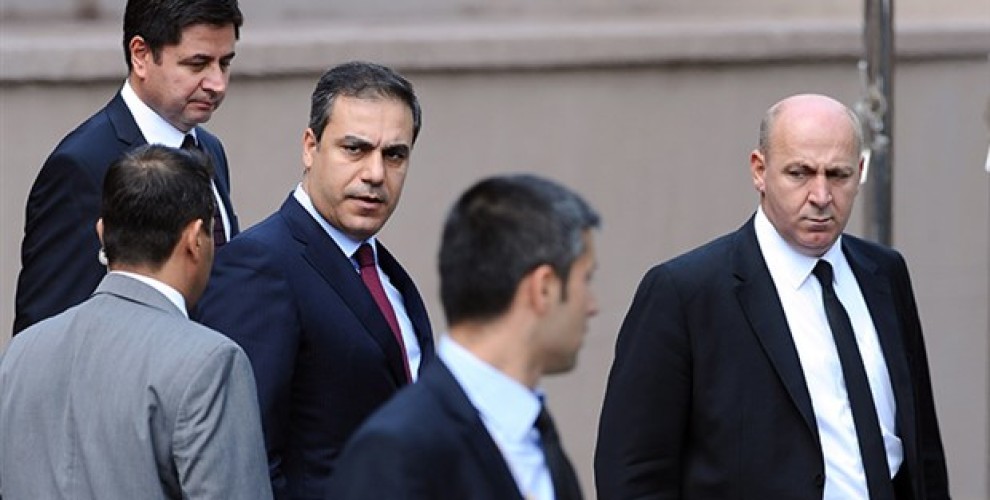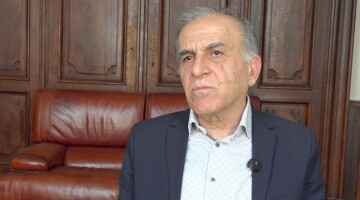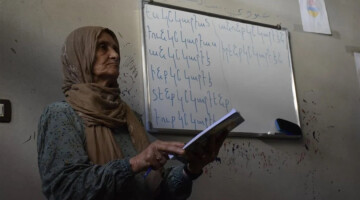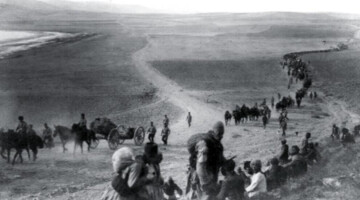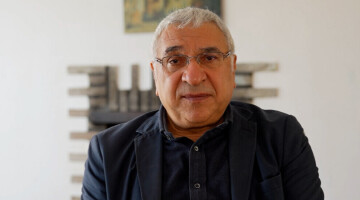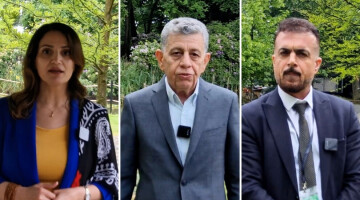The US sees that the Turkish state is having difficulty fulfilling their promises to Russia in Idlib. They are allowing Turkey to attack some regions in Rojava to tear the country away fro the Russia-Iran axis, which gives more weight to the suspicion that they are building a new play.
Turkish President Recep Tayyip Erdogan, seeing red with his animosity against Kurds, threatened to attack Rojava-Northern Syria yesterday, in a repeat of his comments before the invasion of Afrin that “If we agree with the US we will carry out an operation against Manbij and if we agree with Russia we will carry out an operation against Afrin.”
The Turkish state has been dancing on the US’ rope to massacre and exile Kurds in Rojava one day and Russia’s rope the next in the last 3 years. They follow a policy dedicated to awarding all they have and this has been working for them to some extent up to now.
Erdogan’s threats of invasion yesterday are not to be ignored. The declaration of mobilization by the Northern and Eastern Syrian Autonomous Administration shows the extent and reach of the threat. Looking at what this fascist structure blinded with animosity against Kurds can do and what it aims to do, it would be misleading to consider this to be just a narrative geared towards the election.
Erdogan’s threats of invasion came immediately after the US Special Representative for Syria James Jeffrey’s visit to Turkey and MIT Undersecretary Hakan Fidan’s series of meetings in the US and meeting with Erdogan upon his return.
The US Chief of Staff Joseph Dunford’s statement that they are training 35 to 40 thousand personnel local forces to ensure stability in Eastern Syria is reminiscent of the US-led Coalition’s Public Relations Office e-mail to Reuters stating that they will be forming a 30.000 personnel border security force in Northern and Eastern Syria, putting the US under suspicion.
At this point, the question of what the US really wants to do remains. As the war against ISIS draws to an end, as 50% of Hajin, the last place ISIS holds, has been cleared, it is clear what the Turkish state wants to do, but the US’ aims raise serious doubt.
Before Jeffrey visited Turkey, he said “It is time to pull the plug on Astana,” which shows that the US wants to push the Turkish state away from the influence of Russia and Iran and has launched efforts to do that. But the question is, in return for what?
The US sees that the Turkish state is having difficulty fulfilling their promises to Russia in Idlib. They are allowing Turkey to attack some regions in Rojava to tear the country away fro the Russia-Iran axis, which gives more weight to the suspicion that they are building a new play.
Russia on the other hand, thinking that they still have Erdogan’s reins in hand, continues to use Erdogan’s anti-American comments in the triple summit held in Tehran in September instead of focusing on Idlib.
But the Turkish state will ultimately choose the US over Russia. It isn’t entirely clear yet, but the Turkish state wants to involve the US in the Jarablus-Azaz-Bab-Afrin and Idlib line in a proverbial kick to Russia, and include these regions “under the umbrella of NATO”, implementing the “Hatay formula” there as well.
There are signs that Hakan Fidan had a file for “Refortifying the strategic partnership with the US in Syria and working together towards common goals” during his bowing and scraping visits in the US.
What this means on the field is that they will make the US a partner in the annexed areas in Syria, securing the right to enter northeastern Syria for themselves, but they first need to disband the democratic system formed in the region by the Kurds and other peoples.
In other words, they want to evolve the “take Aleppo - give Bab” and “take Eastern Ghouta give Afrin” policy with Russia into a “Let’s be partners in Idlib, let’s include east of Euphrates to it, turn the region into a Jihadistan, divide Syria, strike Russia hard, stall Iran’s Shia crescent” policy.
It hasn’t been officially voiced, and a rigged game is still in place, but it is stated that there have been intense meetings with the US to this end. Looking at Erdogan starting to threaten Rojava and Northern Syria right after Hakan Fidan’s meeting with Erdogan upon his return from the US shows the gravity of the situation.
Another point is that the US has been working for a new structure under their control in Northern and Eastern Syria for a long time. This is understandable to some extent, but as the fight against ISIS draws to a close, it is unacceptable to hold dirty negotiations over the Kurds.
It may be too early to say all the government and military in the US is involved in such a negotiation. But there is information that serious and seriously dirty negotiations are in fact taking place.
There is no doubt that such a negotiation would harm the US and the future and trustworthiness of their regional policies. Such a dirty negotiation over the Kurds, the most oppressed people of the Middle East, will create great trust issues throughout the world for the US.
Kurds, who have been subjected to denial, assimilation and annihilation by the region’s nation states for centuries and have been waging the most effective war against the bane of the world ISIS for the last 5 years, won’t accept such betrayal and will resist to the end.
And, the wish of a clique within the US government to stage new plays also endangers the stability that has been nurtured by the Kurds and the region’s peoples in Northern and Eastern Syria with a great price paid, spreading the Syrian war across a wider landscape and in time as well as damaging the stability of various Middle Eastern countries.
As we were typing up the data at hand regarding Turkey’s threats, the Pentagon issued a weak statement against Erdogan’s threats. The Pentagon statement said, “Military intervention against locations where US military personnel may be present in Northeastern Syria will be cause for great concern. Such acts are unacceptable.”
This is a weak statement, because Erdogan had said in his statement that “the US bases and military will absolutely not be targeted”. This statement has the open ended phrase of “where US military personnel may be present”, and considering the two statements together still leaves a lot of doubt.
Stressing once again that the Turkish state engaging in an invasion “despite the US” does not fit within reason, if we look once again at where and what the Turkish state will target according to the information at hand comes to the following:
Reports say the Turkish state is primarily targeting Girê Spî ad Serekaniye. They want to form a “Turkish belt” instead of an “Arab belt” here, and to wait how the conjuncture plays out for the rest of the lands after creating a divide between Kobanê and Cizire.
A second opinion is that they will pressure the Gire Spi and Serekaniye line and convince the US to turn Manbij over to them (as well as the lands from Shexler to Qereqozax). Looking at Erdogan’s speech yesterday, it would seem that they are content with this option “for now”.
It is not entirely clear whether the possible invasion attack will remain “local” or be “extensive”, but the prevailing opinion is that the resistance must be present in “all areas, all fronts, with all methods and without a time limit”.
In short, it is time for boundless resistance against Turkish colonialism that knows no bounds in their animosity against Kurds.

